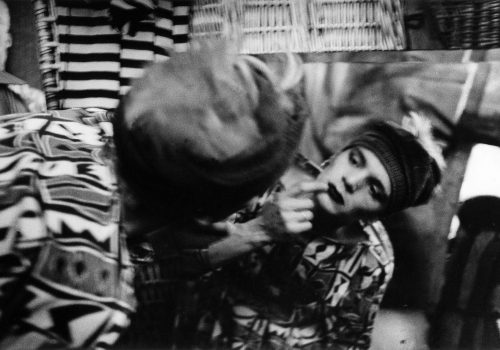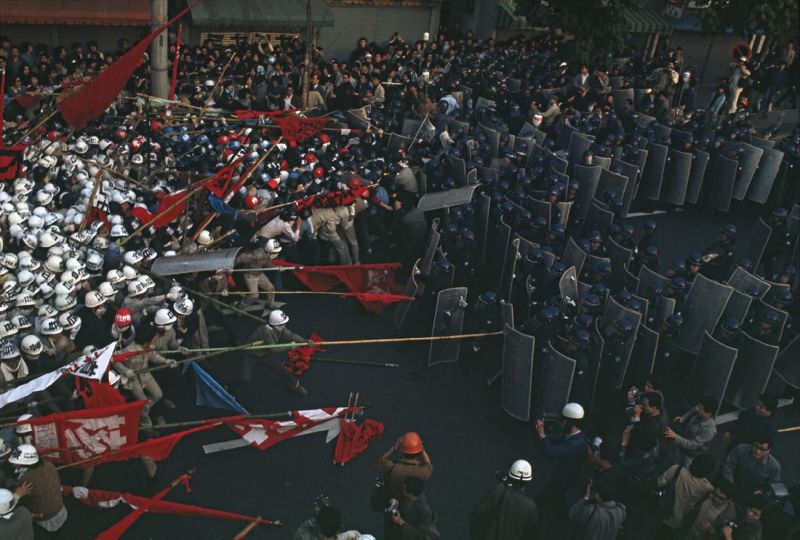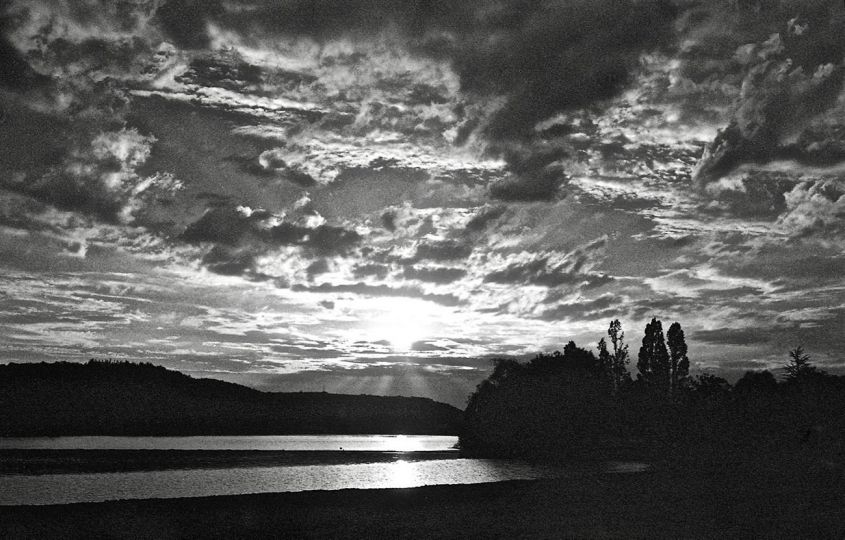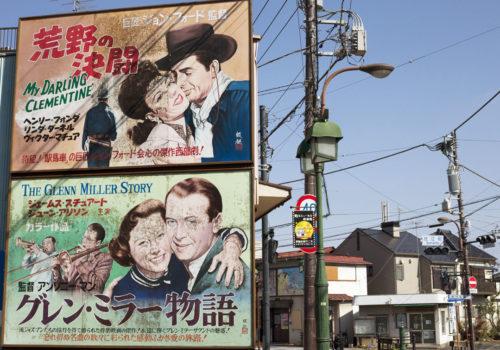In a sort of floating state, Luc Chery, during the first half of the 1980s, photographed the night, its bars, concerts, nightclubs, the postmodern “dance hall wildlife” at the onset of the AIDS years. He integrated himself to the protagonists of this nighttime excitement, eagerly immersing himself as if fishing for images and bringing back trophies or kinds of talismans.
The photographs from the series Drifting, whose point of view is reminiscent of John Deakin’s work, a privileged testimony of Francis Bacon’s Soho period, show human bodies in movement. A muted energy is freed, to the point that a presumed glow from the scene transcends the apparent duality of the black and white. Painted faces, silhouettes of people in drag – “in strange costumes and incredible appearances” (Paul Morand, Open All Night) – stray or sometimes knowing gazes are enough to establish a climate of vibrating unrest, welcoming promiscuity,hypersensuality. With a few exceptions, these intense bodies are lacerated, framed in dilapidated environments , divided into two, shadowed, sometimes becoming relic.
With nonchalance and an intoxicating immediacy, which definitely stuck and delighted the privileged commentators of the oh so narcissistic 1980s, the images, thirty years after they were made, echo a bitter nostalgia, filled with grief. The promise of dawn leads to dusk, relics are worn away. The illness took its first victims at the same time. Who, among the photographed models, would survive the slaughter?
Xavier Rosan
Xavier Rosan is an author specialized in the arts and living in France.
Luc Chery, Drifting : Suites nocturnes 1983-1986
Text by Michka Assayas.
Published by Editions l’Eveilleur
20€
https://leveilleurweb.wordpress.com
















